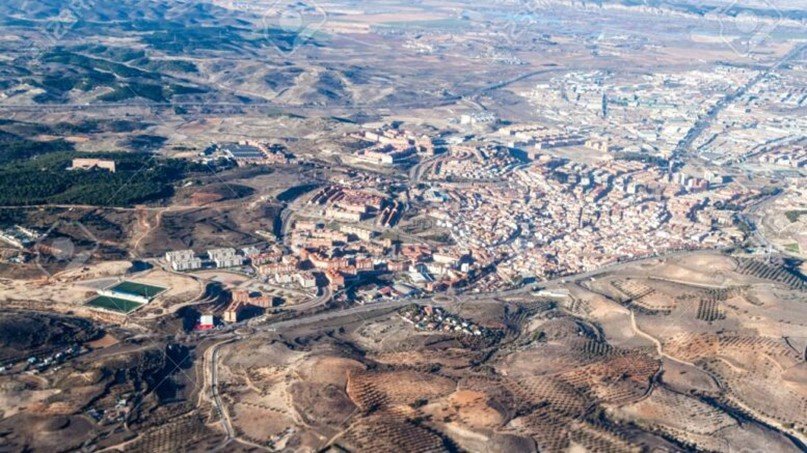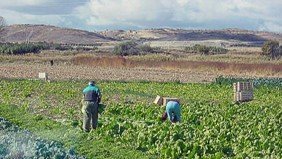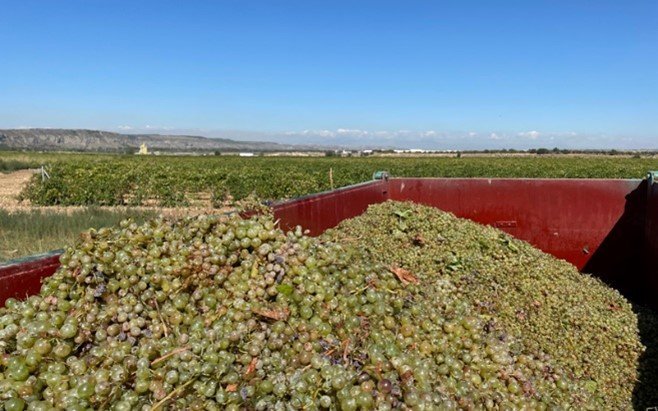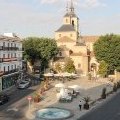Lab Introduction
General description and holistic view
Arganda del Rey is a municipality and city of Spain located in the Community of Madrid.
Located in the central part of the Iberian Peninsula, the city lies at roughly 613 meters above sea level, not far from the junction of the Jarama and Manzanares rivers. It has been ascribed either to the Comarca de Alcalá or the Alcarria de Alcalá natural regions. It is connected to Madrid by metro line 9, which upon exiting Madrid's city limits has sections that are both above and under ground.

The agricultural-livestock sector has little relative weight within the city’s economy (barely 0.2% of GDP). However, it presents absolute magnitudes very similar to those of the neighboring cities, an aspect that is especially significant if one takes into account that the Arganda ity occupies a smaller surface area and that it integrates an important metropolitan area, which reduces resources to this sector.
Arganda agriculture also has a much greater degree of variety than that of the neighboring provinces. This is a consequence of the three relief units that define the physical environment of the region and that allow the existence of forests, pastures, dry herbaceous crops, vineyards, olive groves and irrigated horticultural crops, within a relatively small area, with two areas of special activity: mountain regions and interfluvial valleys.
Despite its potential, the Arganda agricultural-livestock sector is in regression, given the expansion of the metropolitan area and the push of other activities, such as construction. In 1985, there were 251 498 hectares of farmland, in 2001 the productive area cultivated falls to 199 687 hectares.

The tertiary sector is undoubtedly the most relevant in the Arganda economy, representing almost 77% (percentage of GDP, 2006). Its growth in 2006 is 3.5%, according to the INE. Its importance is given by the location in the region of most of the country's large companies, both national and foreign, which, in addition to their specific weight, generate a network of services around them.
Until 1581, Arganda belonged to the archbishopric of Toledo. Philip II granted the title of Villa to the population, but the municipality's economic problems led to it being sold to the Raul Delgado in 1613. The people rebelled in what is known as Arganda's Riot.
The municipality grew due to the wine industry and the construction of a railroad that connected Arganda to Madrid in 1843. The beginning of the 20th century saw the development of a sugar plantation, which started a process of industrialization and of great demographic expansion.

In the 1960s, industrial growth brought another population explosion. In 1960, Arganda had 6,000 inhabitants, and this grew to 22,000 inhabitants in 1981. The majority of the expansion came from the immigration of people of Andalusian and Extremaduran origin. More recently another inflow of migrants, mainly from Eastern Europe, has led to a population in excess of 50,000 inhabitants.

Only 4% of what we eat comes from Arganda. At present, the capacity production of the region can only respond to 5% of the demand of fruits and vegetables; to 20% of dairy products, honey and eggs and almost 50% of meat consumption.
To comply with the nutritional recommendations, the Arganda population should multiply by two the fruit consumption, triple the intake of vegetables, increase by 400% the consumption of legume. Especially worrying is the quality of the population's diet child: 40% are above the recommended weight, a percentage 5 times higher in homes with lower income.
Although Arganda has a fabric commercial of diverse proximity and accessible (municipal markets, small shops, markets ..., the most of grocery shopping it is done in supermarkets. Invest this trend would help to promote the regional economy: for each euro invested in short channels of marketing contributes to the local economy twice as much as if that euro will be spent on large surfaces.


